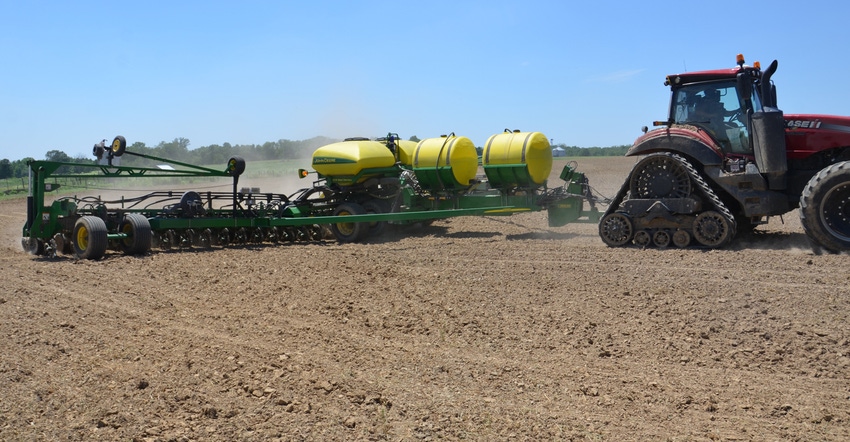
You likely wanted to forget about 2019 and never look back. However, the way 2020 is beginning, Whitney Monin says you might benefit from recalling lessons you learned or relearned in 2019 and applying them in 2020.
“The 2020 season is shaping up a lot like 2019 at this point, except that soil temperatures are trending to be warmer than average coming into spring, and that’s a plus,” Monin says. As a technical agronomist for Channel Seed, she works with Channel seed dealers and farmers in the southern half of Indiana and Kentucky.
“It looks like another season when it will pay to be ready to roll when the weather gives you an opportunity,” she says.
Here are tips Monin offers as you move into the 2020 planting season:
Look for opportunities. Monin believes there will be a premium for being prepared and ready to roll again this spring. “It will also likely pay to look at the big picture,” she says. “Maybe there are certain farms or areas of farms that have drier soil textures or that didn’t catch a shower, where you could work before you can work in other places. Don’t wait. Start fieldwork or planting in these areas.”
Plant soybeans before corn. If you always plant corn first but fields where you want to plant corn are wet, or you’re still waiting to apply inputs there, consider planting soybeans first, Monin says. It’s a lesson some people learned in 2019. Soybeans also tend to be slightly more forgiving if soil conditions are marginal.
“We’re learning that soybeans respond to early planting too,” she adds. “Early planting helps maximize the number of nodes on the main stem. More nodes equal the potential for more soybeans, and more soybeans equals more yield.”
Use seed treatments. Increase your odds of success planting soybeans early by considering seed treatments for disease control. You should look at susceptibility to sudden death syndrome in your varieties prior to early planting. Consider adding seed treatments for SDS if you intend to plant a susceptible variety, Monin says.
If you’re planting early, you may also consider upping seeding rate by perhaps 10%, she says.
Consider insect pressure. Monin expects increased pressure from insects such as white grubs, wireworms, seed corn maggots, bean leaf beetles and stinkbugs, because it was a mild winter with no extended periods of cold weather.
“We saw white grubs active in the soil in the top few inches even in late March,” she says. “You may want to consider insecticides for corn and an insecticide seed treatment for soybeans as well. If you’re set up to apply insecticide in-furrow, this looks like the year to do it.”
Seek advice and help. Many farmers relied on support from various agronomists and local retailers to make it through the challenging 2019 growing season.
“We see the same scenario developing again this year,” Monin says. “Find individuals who supply seed and fertilizer whom you respect and trust, and include them in your decision-making process throughout the season.”
Monin notes that Channel seed dealers consider providing season-long advice part of the job. To find a local Channel seed rep, visit channel.com.
About the Author(s)
You May Also Like




